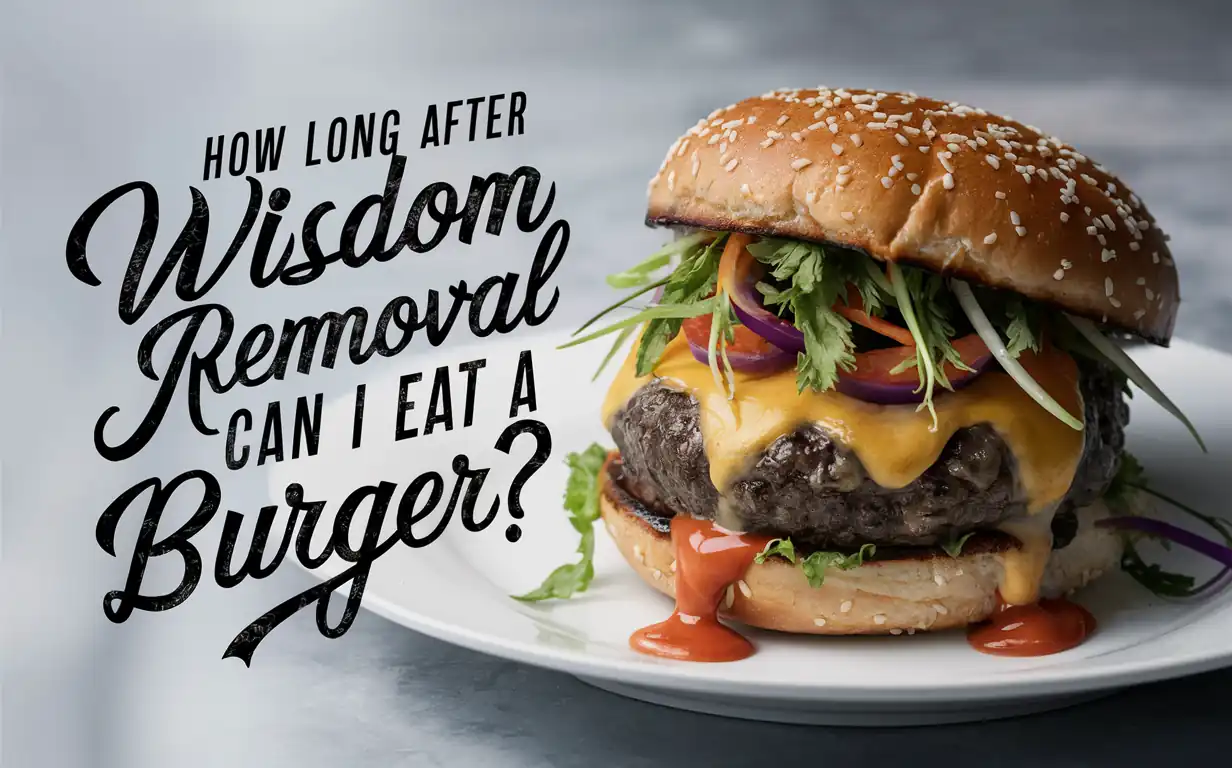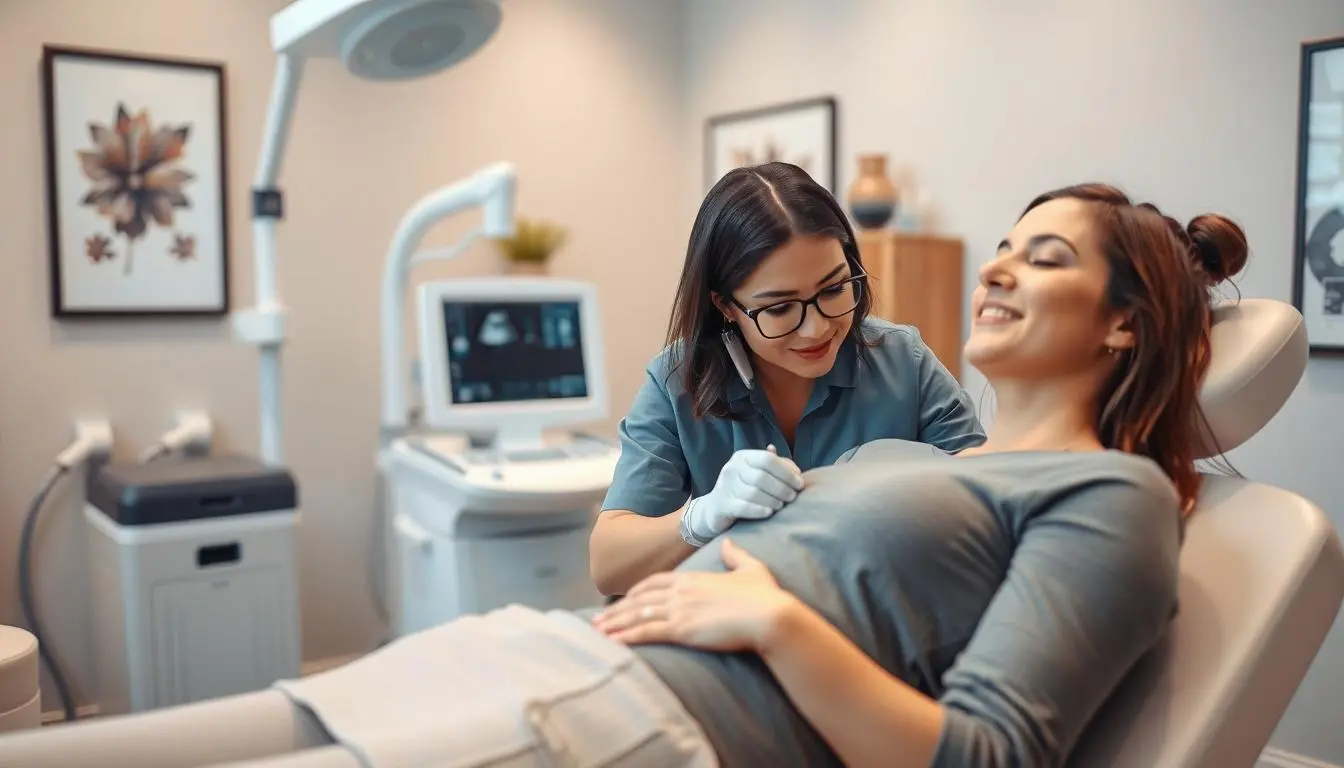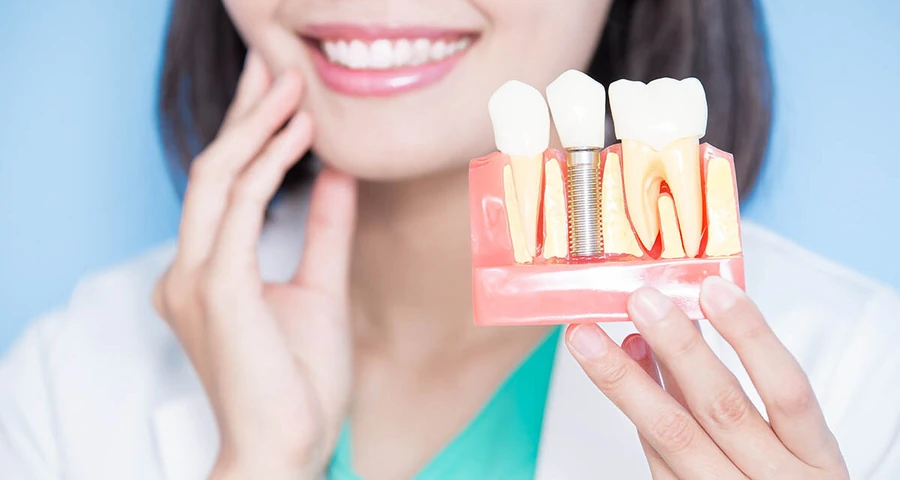Wisdom teeth extraction is a common oral surgery. Many people have questions about how to recover, especially when it comes to eating normally. Eating the wrong foods too soon can slow down healing and cause complications. It is important to know what to eat and when to eat it.
This knowledge helps reduce discomfort and makes recovery faster. If you are craving solid foods or your favorite burger, it is key to understand the right time to add these foods back into your meals.
So, how long after wisdom teeth removal can I eat a burger without risking my recovery?
Let’s break down the recovery timeline, what foods are safe to eat and when, and how to ease your way back to a normal, burger-friendly diet—step by step.
Key Takeaways
- Following wisdom teeth extraction, adhering to a specific diet during the recovery process is vital for proper healing.
- In the first 24 hours after surgery, stick to clear liquids and avoid consuming solid foods to protect the extraction site.
- Gradually transition to soft foods like applesauce, yogurt, and mashed potatoes in the first 48 hours.
- Semi-solid and solid foods, such as soft sandwiches and burgers, can only be reintroduced from the second week, depending on your healing progress.
- Eating inappropriate foods too soon can disrupt the blood clot, increasing the risk of pain, swelling, or dry socket.
- Consult your oral surgeon regularly to ensure you’re following suitable eating guidelines for a smooth recovery.
Can You Eat a Burger After Wisdom Teeth Removal?
The short answer is no, you should not eat burgers right after wisdom teeth extraction. Burgers are solid foods that need a lot of chewing. Chewing too soon can hurt your healing process.
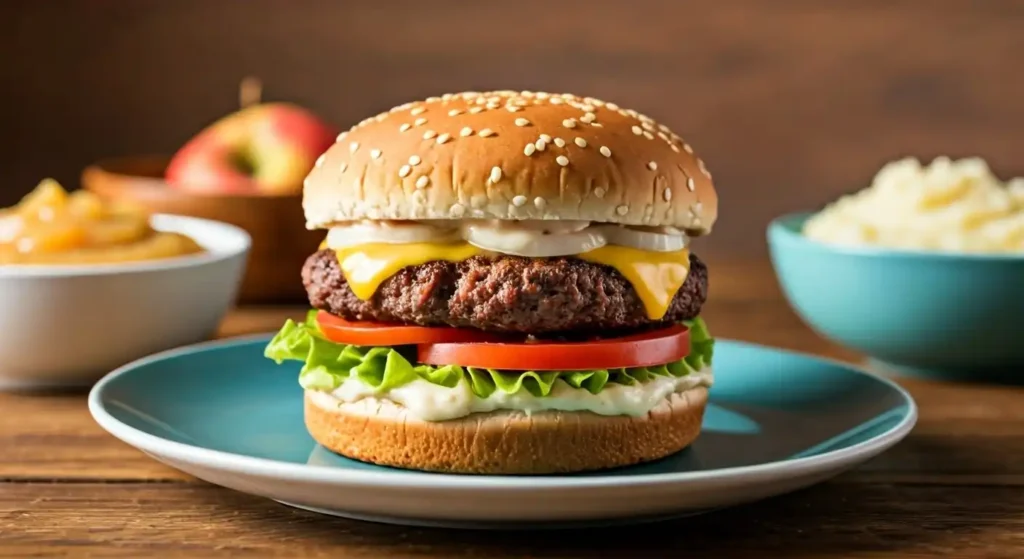
If you try to eat a burger too early, it may disturb the blood clot in your surgical site. This could lead to a dry socket or infection, which can be very painful.
Your mouth is sensitive during recovery, so it takes patience before you can eat solid foods like a burger. You usually need to wait at least two to three weeks after surgery, depending on how well you heal.
During this time, it’s best to stick with softer foods to avoid straining your gums and teeth. Always check with your oral surgeon for advice based on your own situation before eating foods like burgers.
How Soon Can You Eat After Wisdom Teeth Removal?
Eating after getting your wisdom teeth removed requires some care. Right after the surgery, you should stick to clear liquids. This helps keep you hydrated without bothering the extraction site. You can slowly add soft foods as you heal.
It is important to stay away from solid foods, hot drinks, and spicy items in the beginning. You don’t want to disturb the surgical site since that could delay healing. Knowing what to eat during each part of recovery can help you smoothly return to your normal diet. Let’s take a closer look at the recovery timeline.
First 24 hours: No solid food at all
In the first day after your wisdom teeth extraction, focus on resting and staying hydrated. Drink clear liquids like water, apple juice, or warm broths. This helps prevent dehydration and keeps you comfortable. Do not use straws; the suction could remove the blood clot at the surgical site, leading to a dry socket.
You might have swelling, so use ice packs on your cheeks. This can reduce discomfort and swelling. Pay attention to your pain levels and take any pain medicine that your doctor has given you or that you can get over the counter.
It’s very important to avoid solid or semi-solid foods at this time. Soft foods like yogurt or applesauce can still disturb the extraction site. Stick with liquids to help the blood clot form, which is an important part of the healing process.
24-48 hours: Transition to a soft-food diet
After the first 24 hours, you can start eating soft foods that don’t need chewing. Good options are yogurt, applesauce, and mashed potatoes. These foods are gentle on your teeth and gums. Keep them at room temperature to help avoid bothering your surgical site.
During this time, your mouth might still be sore or swollen. It’s best to eat slowly and carefully. Stay away from foods with small bits, like seeds, which can get stuck in the extraction site.
While you eat soft foods, keep using ice packs if the swelling continues. Drink plenty of water. Remember to rinse your mouth gently with warm salt water after meals. This helps clear food debris and stops infections or irritation in your healing areas.
Recovery Timeline & Eating Guidelines
The healing process after wisdom teeth surgery follows a staged timeline, with specific dietary restrictions at each step. In the first 24 hours, avoid all solid foods and stick to clear liquids to promote blood clot formation. Transition to nutrient-packed soft foods like applesauce and yogurt during the subsequent 24-48 hours.
Read More: Step-by-Step Guide Wisdom Teeth Food Timeline After Surgery
From the fourth day onward, semi-solid items such as soft-cooked pasta and scrambled eggs can be cautiously introduced. Around the second week, depending on your healing progress, soft sandwiches and tender proteins may become an option. Avoid crunchy or hard foods as they can disrupt the surgical site, delay healing, and lodge food debris into sensitive areas.
| Recovery Stage | Recommended Foods | Foods to Avoid |
|---|---|---|
| First 24 hours | Clear liquids (e.g., broth, water) | Solid foods, hot drinks |
| Days 2–3 | Soft foods (e.g., yogurt, applesauce) | Crunchy, spicy, or acidic foods |
| Week 2 and beyond | Soft sandwiches, tender proteins | Hard or overly chewy foods |
Day 1 (Day of Surgery): Liquid-only diet, no chewing
After surgery, it’s important to follow a liquid-only diet to help with healing. Drinking clear liquids like apple juice, smoothies, and broth keeps you hydrated without putting stress on the extraction sites. Do not chew anything, as this can move blood clots, which are very important for recovery.
Since the surgical sites are sensitive, choosing room temperature beverages helps reduce inflammation and discomfort. Being careful about what you drink during this time makes it easier to move to soft foods in the next few days.
Day 2-3: Soft foods only, avoid hot drinks, no burger yet
By the second and third day, your diet can slowly include soft foods. Think of mashed potatoes, scrambled eggs, and applesauce. These choices are easy on your healing gums. They don’t require much jaw movement, so there’s less risk of irritation. Make sure everything is at room temperature. This helps prevent extra swelling or uncomfortable feelings.
Even if your pain gets better, you still can’t have solid food like a burger. Chewing these foods might put stress on your surgical site and slow down recovery. You should avoid hot drinks, spicy foods, and anything that might stick in your gums.
Stay hydrated by drinking water often. After every meal, rinse your mouth gently with warm salt water. This helps keep the extraction sites clean from food bits that could make the healing process longer.
Day 4-7: Begin semi-solid foods, soft bread, very soft protein
During days four to seven after your wisdom teeth extraction, it is important to start eating semi-solid foods to help with healing. You can introduce soft bread, which adds some texture without hurting your surgical sites.
Foods like scrambled eggs or cottage cheese are good options that provide the nutrients you need. Pay attention to any discomfort in your gums. They need time to adjust without causing any complications. Staying hydrated with clear liquids and avoiding crunchy or spicy foods will also help you recover during this time.
Week 2: Can begin testing soft sandwiches, watch for discomfort
During the second week after surgery, you can start to gently add soft sandwiches into your diet. At this point, the healing process often allows you to have very soft bread and easy-to-chew fillings, like tuna or egg salad.
It’s important to watch for any discomfort since the extraction sites may still be tender. Choose softer textures to prevent irritation and make sure each bite helps your recovery. Don’t forget to stay hydrated and keep up with mouth hygiene to help support your ongoing healing.
Week 3+: Solid food (like burgers) possibly reintroduced — if healing well
In the third week after wisdom teeth extraction, you may start to return to a more normal diet. This includes the exciting chance to enjoy solid foods like burgers. The healing process is very important during this time. It is key to check if the surgical sites are healing well.
Patients should watch for any discomfort when they eat these foods. Chewing can still hurt sensitive areas. Make sure to balance enjoying these foods with good oral hygiene. This will help ensure proper healing and support your recovery after wisdom teeth removal.
Best Foods After Wisdom Teeth Removal (Curated List)
Choosing soft foods is important after wisdom teeth removal. These foods can help you get better. You can enjoy creamy yogurt, mashed potatoes, and smooth applesauce. They are easy on the extraction sites. Some other good choices are lukewarm soups or broths, scrambled eggs, and soft-cooked pasta.
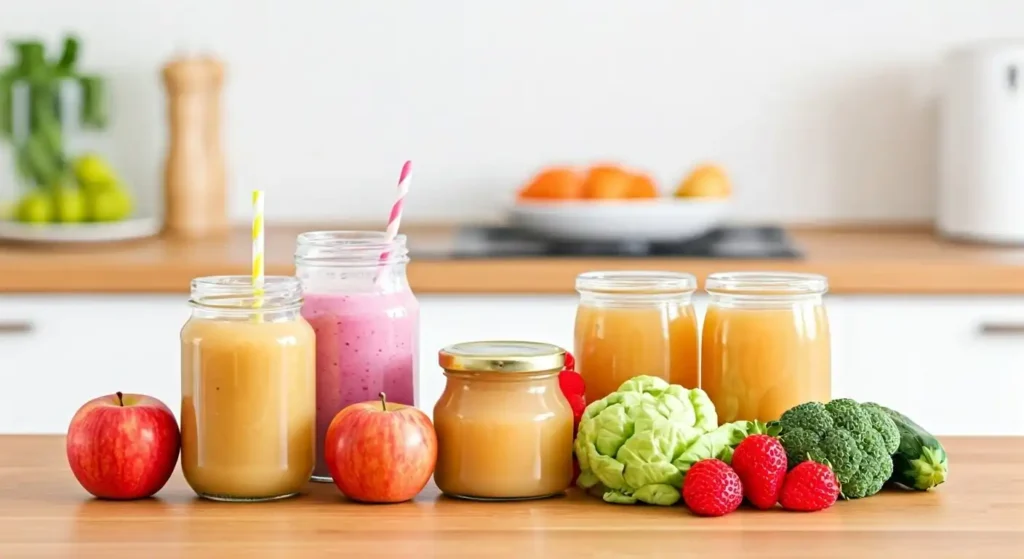
Eating these soft foods helps your healing process and lowers the risk of complications like discomfort and dry socket. Drinking clear liquids will also keep your mouth healthy during recovery.
Also Read: Can You Drink Soda After Wisdom Teeth Removal Safely?
✔️ First 48 Hours
In the first 48 hours after surgery, it is very important to have a liquid-only diet. This helps to support proper healing. Gentle drinks, like smoothies without seeds and warm broths, keep the extraction site clean. They also lower the risk of complications. It’s essential to avoid hot or spicy foods, as they can cause irritation.
Eating soft foods, such as applesauce and protein shakes, can help with discomfort and assist in recovery. Make sure to drink plenty of water because staying hydrated is key for the healing process.
Smoothies (no seeds, no straw)
Smoothies are a great choice when you are recovering from wisdom teeth extraction. You can blend soft fruits or yogurts to make drinks that are gentle on your healing areas. Make sure all your ingredients do not have seeds. This helps to prevent any discomfort for your gums.
Also, don’t use straws. The suction from straws can move blood clots that are important for healing. Keeping your smoothies lukewarm can reduce discomfort too. This will help you get the vitamins and minerals you need for a good recovery.
Lukewarm soups & broths
Lukewarm soups and broths are great choices after wisdom teeth extraction. They keep you hydrated and provide important nutrients while helping you avoid chewing, which can be risky. Choosing clear and gentle broths can soothe the surgical site. This can help reduce inflammation and discomfort.
Make sure to eat them when they are lukewarm to protect your sensitive gums. In the early days of recovery, it is good to keep your meals soft and easy to swallow. This will help support your healing process effectively.
Applesauce
Applesauce is a great choice after surgery. Its soft texture makes it easy to eat and it needs little chewing. This keeps it gentle on the extraction sites while giving important nutrients. As you heal, adding this naturally sweet option helps you stay hydrated and keeps your energy up.
Its smooth consistency helps you swallow easily. This lowers the chance of discomfort or irritation in your gums and makes recovery more pleasant. Enjoy it chilled for extra soothing effects.
Protein shakes
Protein shakes are full of nutrients and easy to drink. They can help a lot during the first days after wisdom tooth extraction. These shakes supply important proteins that support the healing process. They give your body what it needs to recover.
Choose smooth, well-blended shakes. This will help avoid bits that might irritate the surgical sites. Adding ingredients like yogurt or bananas can make your shakes taste better. This will also help keep your gums comfortable while you heal.
✔️ Days 3–7
Transitioning from days 3 to 7 after surgery, the focus is on soft foods. These foods help with healing and are gentle on the extraction sites. Mashed potatoes and scrambled eggs are good choices. They provide comfort and nourishment without causing discomfort.
Cottage cheese and Greek yogurt offer important protein for your diet. Cooked cereals can also be a part of your meals to create a balanced diet. Staying hydrated is key. Always make sure your food is easy to chew. Avoid any crunchy or chewy options that could disturb the healing process.
Mashed potatoes
After getting your wisdom teeth out, mashed potatoes are a great food choice. They are smooth, so they help reduce discomfort while giving you important carbs and energy. Make sure the mashed potatoes are lukewarm to prevent irritation at the surgical site.
They are easy to swallow and digest, which helps your healing process. You can also add soft cheeses or broths for extra nutrition. This makes them tastier and more nourishing without causing complications. Enjoy this comforting food while you recover.
Scrambled eggs
Creamy scrambled eggs are a great option after having wisdom teeth extraction. They are healthy and easy to eat. This makes it easier to avoid discomfort when chewing. Scrambled eggs are high in protein, which helps with the healing process and keeps your energy up.
It’s best to eat them when they are lukewarm to prevent any irritation. Make sure they are soft and well-cooked. This will lower the risk to your surgical sites as you start to eat a wider variety of foods.
Cottage cheese
After wisdom teeth removal, cottage cheese is a great choice. It has a soft texture, making it easy to eat without bothering the surgical site. This helps reduce discomfort and complications. Cottage cheese gives you protein and calcium, which support the healing process.
You can blend it with soft fruits like bananas or use it in smoothies. This adds some variety while you stick to a soft food diet. Always remember to chew gently to protect your sutures and help with proper healing.
Greek yogurt
Greek yogurt is a great choice for the early stages of recovery after surgery. Its creamy texture is soft, so it won’t bother the extraction sites.
It is also high in protein, which helps the healing process and gives the body important nutrients. It’s best to choose plain yogurt to avoid irritation from extra sugars or flavors. You can also mix it with smooth fruits like bananas to improve the taste while being gentle on sore gums. Enjoy its benefits while keeping discomfort away.
Cooked cereals
Cooked cereals are a good choice when you are recovering. They provide important carbohydrates and have a soft texture that is easy to eat. You can choose options like oatmeal or cream of wheat. Make them with warm water or milk to make them smoother. These cereals help keep your energy up as you heal.
They also add some fiber to your food. You can enjoy them with a bit of honey or a dash of cinnamon for flavor, but be sure they are gentle on your extraction sites.
✔️ Week 2 and Beyond
During the second week and later, it’s important to slowly add soft-cooked pasta, soft veggies, and soft fruits like bananas and melons back into your diet. This shift helps you have a wider variety of foods while still being gentle on your extraction sites. Foods like tuna or egg salad can give you protein without causing discomfort.
You can also enjoy soft bread without crust for something different. Always check how your gums feel with these foods. This way, your recovery process stays easy and free from complications.
Soft-cooked pasta
Soft-cooked pasta is gentle on the gums and a great option while you recover. It is important to cook the pasta well to make it soft. This way, it feels smooth and comfy to eat, avoiding any discomfort. It gives you the energy to aid your healing process and helps prevent problems that come with chewy foods.
You can add a light sauce or broth to make it tastier. This dish is a lovely addition to your meals as you move towards a normal diet.
Cooked soft vegetables
After dental surgery, adding cooked soft vegetables to your diet can give you important nutrients and help ease discomfort. Choose tender options like broccoli, carrots, and zucchini.
You can cook these until they are soft to support the healing process. Steaming or boiling keeps their vitamins and makes them easier to chew. It is important to stay away from crunchy vegetables, as they could interfere with the extraction site. This careful choice will help you have a smooth recovery while also nourishing your body.
Soft fruits (bananas, melon)
Adding soft fruits like bananas and melon to your diet after surgery can be tasty and healthy. These fruits are soft, making them easy to chew and safe for your healing gums. They offer important vitamins and help keep you hydrated. Plus, they can satisfy your cravings without causing any problems at the surgical site. As you move through the recovery process, these fruits can make it easier to return to your regular diet.
Tuna salad, egg salad
Tuna salad and egg salad are great choices when you are recovering. They are tasty and give you nourishment without making you chew hard. These dishes are rich in protein and are soft, making them easy to eat. They can help with the healing process after wisdom tooth extraction.
Make sure to blend the ingredients well to prevent any discomfort at the surgical site. As you start eating these soft foods, pay close attention to how your gums feel and change your choices if needed. Taking your time with what you eat will help you recover smoothly while enjoying your meals.
Soft bread (without crust)
After getting your wisdom teeth removed, soft bread without crust is a good choice for your diet. Its soft texture helps the healing process. It is also easy to chew, which reduces discomfort around the surgical sites. Picking softer types of bread helps avoid hurting your gums.
You can also use soft spreads with the bread to get better nutrition and keep food debris away. This helps you recover more smoothly. Remember to drink enough water and watch for any signs of inflammation.
Essential Aftercare & Hygiene Tips
Taking care of yourself after wisdom teeth removal is very important for a good recovery. Rinsing your mouth with warm salt water helps keep the surgical sites clean and lowers the risk of infection. To prevent dry socket and other issues, avoid hard, crunchy, or spicy foods. Keep the extraction sites free of food debris.
Always follow your dentist’s instructions about antibiotics and any other care you need. Drinking clear liquids is also important for healing well.
Can Pineapple Juice Help with Wisdom Teeth Recovery?
Pineapple juice has a substance called bromelain. This may help lessen swelling and inflammation after wisdom teeth removal. But, it can also be acidic and might irritate your healing gums. It’s best to talk to your dentist before drinking pineapple juice during your recovery. They can make sure it fits with your aftercare plan.
Also Explore: Bump on Roof of Mouth: Causes & When to See a Doctor
Conclusion
After getting wisdom teeth removed, it’s important to take time to heal. Moving from just liquids back to your favorite foods, like burgers, depends on how well you recover. Pay attention to how your body reacts to different food textures to help your healing.
Good aftercare and keeping clean are key to avoiding problems. By following your dentist’s advice, you can go through this recovery process safely and slowly get back to a normal diet.
Frequently Asked Questions
1. Can I eat a burger if only bottom wisdom teeth were removed?
If only your bottom wisdom teeth were taken out, you can begin eating solid foods like burgers around week 3, as long as you are healing well. Pay attention to your body and stop eating if you feel any discomfort. Talk to your dentist for specific advice.
2. What are the signs I’m ready to eat solid foods like burgers?
Signs that you are ready to eat solid foods like burgers include having little pain, less swelling, and being able to open your mouth easily. If you can chew soft foods without any discomfort and are in the third week or later of healing, you might be ready.
3. Can I eat after wisdom teeth removal on the same day?
On the day of wisdom teeth removal, you should eat only liquids. Eating solid foods can harm the surgical site and cause complications. You can enjoy smoothies or lukewarm soups. Avoid using straws, as they might dislodge any clots.
4. Can I eat McDonald’s 5 days after wisdom teeth removal?
After your surgery, you might want to eat McDonald’s five days later. However, it’s better to choose softer foods. Solid foods can hurt your healing gums. If you’re feeling good and healing well, you can try a soft burger without the crusts or toppings. Remember, comfort is more important than cravings.
5. How long after wisdom teeth can I eat burgers?
By week 3, if you are healing well, you can start to add solid foods back into your diet, like burgers. However, watch for any discomfort. It’s a good idea to choose softer options at first to make sure eating is comfortable while you recover.
6. Can I eat fries 9 days after wisdom teeth removal?
After 9 days, you might be able to eat fries if you feel good and have no pain. Choose soft, non-crunchy fries. Stay away from hard or very salty fries, as they could bother your healing gums. Always pay attention to what your body is telling you.
7. Can I eat meat 5 days after tooth extraction?
Eating meat five days after tooth extraction is usually not a good idea. Your gums are still healing at this time. Eating tender meats might cause you discomfort. It’s best to wait until you are more advanced in your recovery. Aim to wait until the second week before bringing back solid meats.
8. How long do I need to wait before chewing again?
After wisdom teeth removal, you should not chew for at least the first 24 hours. After four days, you can slowly start eating soft foods. However, only begin chewing solid foods after two weeks if healing is going well. Always pay attention to your body if you feel any discomfort.
9. Is cold food better after oral surgery?
Cold foods can feel nice after oral surgery. They can help lower swelling and ease discomfort. But be careful not to eat anything too cold, as it may make your mouth sensitive. Pay attention to how your mouth feels. It’s a good idea to talk to your dentist for advice that fits your needs.
10. Are soft burgers safe earlier than regular ones?
Soft burgers are a safe choice after wisdom teeth removal. Just make sure they are cooked well and easy to chew. Avoid hard toppings, and pay attention to any discomfort when you eat. Healing is important to prevent complications.
11. When can I eat meat after wisdom teeth removal?
After you have waited for about two weeks, you can start eating soft meats. This includes things like shredded chicken or ground beef. Make sure your healing is going well. If you are not sure about adding solid meats like steaks or burgers, talk to your dentist.

